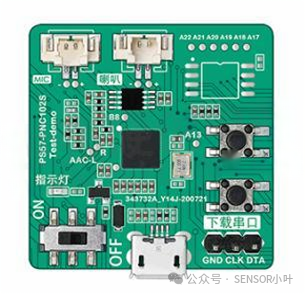With the increasing popularity of high-speed Digital Signal Processors (DSPs) and their peripherals, electronic system designers are facing increasingly severe issues related to electromagnetic interference (EMI). In earlier studies, such issues were often referred to as electromagnetic interference (EMI) or radio frequency interference (RFI), while modern engineering more accurately adopts the concept of “electromagnetic compatibility (EMC).” EMC encompasses two core dimensions: the interference strength (emission) of the system on the external electromagnetic environment and its own resistance to interference (sensitivity). According to the Bolos criterion, a DSP system can be considered to have electromagnetic compatibility if it meets the following three requirements:
-
Does not generate interference to external systems
-
Has sufficient immunity to external electromagnetic emissions
-
No mutual interference among internal components of the system

Causes and Propagation Mechanisms of Electromagnetic InterferenceWhen interference energy causes the receiving device to enter an abnormal operating state, it constitutes effective interference. Interference propagation can be divided into direct conduction (through conductors or common impedance coupling) and indirect radiation (through spatial electromagnetic fields or crosstalk coupling). Typical sources of interference include electromagnetic radiators such as relays, DC motors, and fluorescent lights, as well as conductive media like power lines and interconnect cables. Notably, clock circuits in high-speed digital circuits often become the main source of broadband noise, with harmonic distortion reaching up to 300MHz, which needs to be suppressed during the design phase. Control signal lines such as reset lines and interrupt lines are particularly sensitive in digital systems.
Three Paths of Conducted Interference
-
Direct Conduction CouplingWires in an electromagnetic noise environment can act as “antennas,” absorbing and conducting interference to other circuits. A typical case is conducted interference introduced by power lines, which needs to be suppressed through a decoupling network at the power entry point.
-
Common Impedance CouplingWhen different circuits share a grounding path, the current flowing through the common impedance generates coupling voltage. For example, the ground current of Circuit A can modulate the reference potential of Circuit B through the common ground impedance, leading to noise coupling.
-
Radiation Coupling (Crosstalk)Changing currents in conductors generate alternating electromagnetic fields, which in turn induce transient currents in nearby conductors. This near-field coupling effect is closely related to the spacing between wires and the signal edge rate.
Dual Mode Characteristics of Radiated Emissions
-
Differential Mode Radiation (DM): Formed by the current in the signal loop, the radiation intensity is proportional to the loop area.
-
Common Mode Radiation (CM): Arises from fluctuations in the system reference potential, typically 2-3 orders of magnitude stronger than differential mode radiation. Effective suppression of CM radiation requires optimizing grounding design to minimize common mode current paths.
Key Design Factors Affecting EMC
-
Operating VoltageHigher supply voltages increase signal swing, exacerbating electromagnetic emissions; while lower voltage supplies reduce emissions, they may affect receiving sensitivity.
-
Frequency CharacteristicsHigh-frequency signals generate stronger electromagnetic radiation, especially the switching transients of digital systems (di/dt can reach 10^9 A/s), which can excite broadband radiation. The periodic characteristics of clock signals are more likely to form discrete emission spectral lines.
-
Grounding Strategy
-
Low-frequency systems (<1MHz): Single-point grounding to avoid ground loops.
-
High-frequency systems (>10MHz): Multi-point grounding to reduce ground impedance.
-
Mixed systems: Use a composite architecture of “low-frequency single-point + high-frequency multi-point” while paying special attention to isolating digital ground from analog ground to avoid forming coupling paths.
-
PCB LayoutKey measures include:
-
Controlling the return paths of critical signals.
-
Using multilayer boards to construct complete reference planes.
-
Implementing impedance matching for high-speed signals.
-
Power IntegrityNoise caused by switching transients can be mitigated by:
-
Placing decoupling capacitors (0.1μF ceramic capacitors + 10μF tantalum capacitors) close to the power pins.
-
Optimizing the impedance of the Power Distribution Network (PDN).
-
Using π-type filter networks to suppress high-frequency noise.
Three Noise Suppression Strategies for DSP Systems
-
Source Suppression: Optimize clock circuit design and use spread spectrum clocking techniques.
-
Path Blocking: Cut off conduction/radiation paths through shielding, filtering, and proper routing.
-
Receiving Reinforcement: Implement signal conditioning (e.g., Schmitt trigger shaping) for sensitive circuits.
DSP Noise Reduction ChipsTechnologies for Noise ReductionThere are three methods to prevent interference: 1. Suppress source emissions. 2. Render coupling paths as ineffective as possible. 3. Minimize the sensitivity of receiving devices to transmissions.